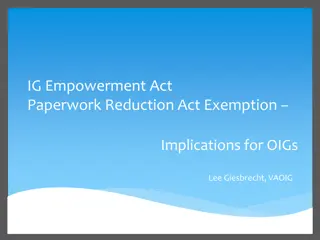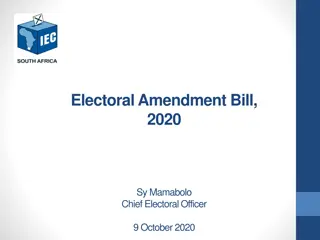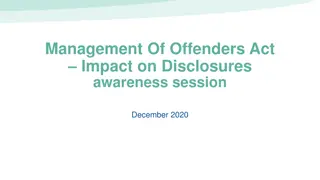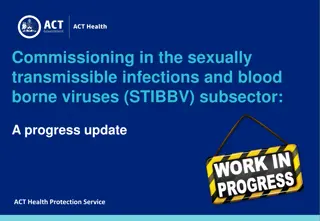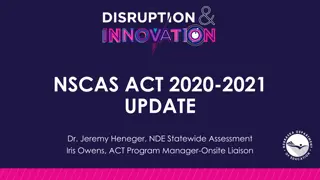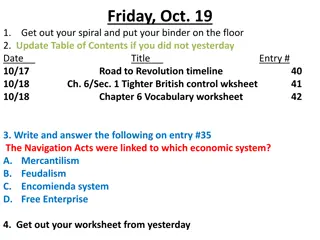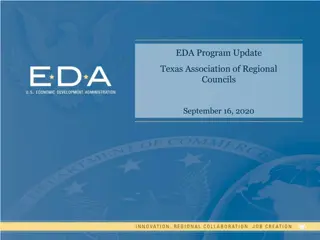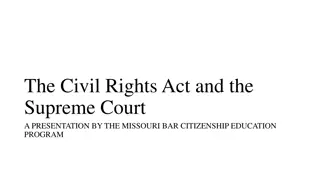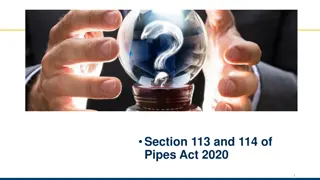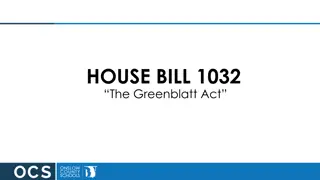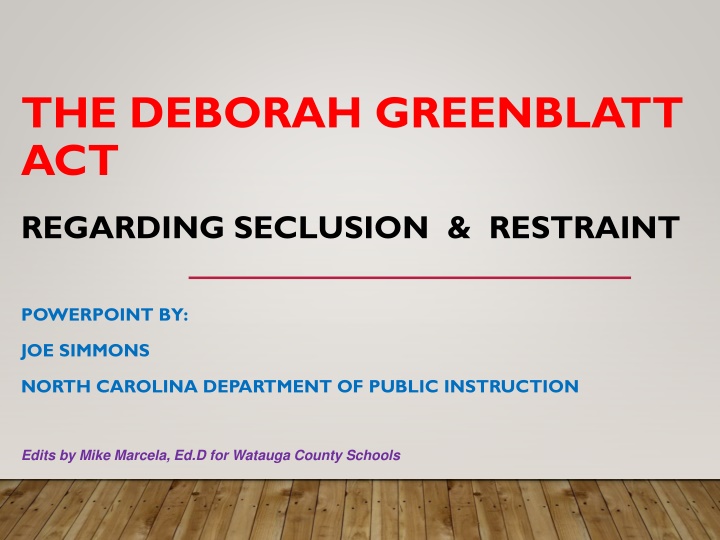
The Deborah Greenblatt Act: Seclusion & Restraint in North Carolina Schools
Explore the Deborah Greenblatt Act and its impact on seclusion and restraint practices in North Carolina schools. Learn about pre-existing North Carolina laws, the legacy of Deborah Greenblatt, and the use of physical restraint in schools. Discover the regulations surrounding physical restraint and why it is important in maintaining a safe educational environment.
Download Presentation

Please find below an Image/Link to download the presentation.
The content on the website is provided AS IS for your information and personal use only. It may not be sold, licensed, or shared on other websites without obtaining consent from the author. If you encounter any issues during the download, it is possible that the publisher has removed the file from their server.
You are allowed to download the files provided on this website for personal or commercial use, subject to the condition that they are used lawfully. All files are the property of their respective owners.
The content on the website is provided AS IS for your information and personal use only. It may not be sold, licensed, or shared on other websites without obtaining consent from the author.
E N D
Presentation Transcript
THE DEBORAH GREENBLATT ACT REGARDING SECLUSION & RESTRAINT POWERPOINT BY: JOE SIMMONS NORTH CAROLINA DEPARTMENT OF PUBLIC INSTRUCTION Edits by Mike Marcela, Ed.D for Watauga County Schools
PRE-EXISTING NORTH CAROLINA LAW N.C. Gen. Stat. 115C-391(a)(in part). Corporal punishment, suspension, or expulsion of pupils. Notwithstanding any school board discipline policies, school personnel may use reasonable force, including corporal punishment, to control behavior or to remove a person from the scene in those situations when necessary to: 1.) To quell a disturbance threatening injury to others; 2.) To obtain possession of weapons or other dangerous objects on the person, or within the control, of a student; 3.) For self-defense; 4.) For the protection of persons or property; or 5.) To maintain order on school property, in the classroom, or at a school-related activity on or off school property.
PRE-EXISTING NORTH CAROLINA STATUTORY LAW N.C. Gen. Stat. 115C-390. School personnel may use reasonable force. Except as restricted or prohibited by rules adopted by the local boards of education, principals, teachers, substitute teachers, voluntary teachers, and teacher assistants and student teachers in the public schools of this State may use reasonable force in the exercise of lawful authority to restrain or correct pupils and maintain order.
DEBORAH GREENBLATT Deborah Greenblatt, a North Carolina attorney, was primarily responsible for bringing together the diverse coalition of disability advocates and education stakeholders who drafted the current bill promoting the safe use of seclusion and restraint in public schools. Unfortunately, she was not able to see the final passage of the bill. Deborah died Monday, June 13, 2005. Deborah was a passionate advocate for children and adults with mental disabilities in her role as the executive director of Carolina Legal Assistance for the past twenty-three years. She was described by colleagues as a warrior for justice and a hero to others. Deborah represented clients in special education disputes, fair housing cases, class action suits for individuals in state hospitals and employment discrimination cases
PHYSICAL RESTRAINT Definition Physical restraint: means the use of physical force to restrict the free movement of all or a portion of a student s body. North Carolina law only permits the use of physical restraint in the circumstances listed in G.S. 115C-391.1(c)(1). Any use of physical restraint in circumstances not listed in the statute, including the use of physical restraint solely as a disciplinary consequence, is deemed unreasonable and is prohibited.
PHYSICAL RESTRAINT SHALL BE CONSIDERED TO BE A REASONABLE FORCE WHEN USED IN THE FOLLOWING CIRCUMSTANCES : 1. To obtain possession of weapons or other dangerous objects on the person, or within the control of a student; 2. To maintain order or to prevent or break up a fight; 3. For self-defense; 4. To ensure the safety of any student, employee, volunteer, or other person present; 5. To teach a skill, to calm or comfort a student, or to prevent self-injurious behavior; 6. To escort a student safely from one area to another; 7. If used as stated in an IEP, Section 504, or behavior intervention plan 8. To prevent imminent destruction to school or another person s property.
PHYSICAL RESTRAINT SHALL NOT BE: considered a reasonable use of force when used solely as a disciplinary consequence.
THIS SHALL NOT BE CONSTRUED TO PREVENT: the use of force by law enforcement officers in the lawful exercise of their law enforcement duties.
MECHANICAL RESTRAINT safeGuard_top Definition Mechanical restraint means the: use of any device or material attached or adjacent to a student s body that restricts freedom of movement or normal access to any portion of the student s body and that the student cannot easily remove.
MECHANICAL RESTRAINT IS PERMISSIBLE ONLY IN THE FOLLOWING CIRCUMSTANCES: 1. when properly used as assistive technology device included in the student s IEP, Section 504, Behavior Intervention Plan, or as otherwise prescribed by a medical or related service provider; 2. when using seat belts or other safety restraints to secure students during transportation; 3. To obtain possession of weapons or other dangerous objects on the person or within the control of a person; 4. For self-defense; 5. To ensure the safety of any student, employee, volunteer, or other person.
Mechanical restraint, including the tying, taping, or strapping down of a student shall not be considered to be a reasonable use of force and its use is prohibited. ASP%2520TriFold%2520Restraints This shall not be misconstrued to prevent the use of mechanical restraint devices, such as handcuffs, by law enforcement officers in the lawful exercise of their law enforcement duties. image4FR
SECLUSION Definition School personnel may seclude a student if seclusion is required to ensure the safety of the student or others. A student placed in seclusion may be confined alone in an enclosed space from which the student is physically prevented from leaving by locking hardware or other means, or from which the student is not capable of leaving due to physical or intellectual capacity.
SECLUSION OF STUDENTS BY SCHOOL PERSONNEL MAY BE USED IN THE FOLLOWING CIRCUMSTANCES: 1. To respond to a person in control of a weapon or other dangerous object; 2. To maintain order or prevent or break up a fight; 3. For self-defense; 4. When a student s behavior poses a threat of imminent physical harm to self or others or imminent substantial destruction of school or another person s property; 5. When used as specified in the student s IEP, Section 504, Behavior Intervention Plan
SECLUSION REQUIREMENTS The student is constantly monitored by an adult in close proximity who is able to see and hear the student at all times; The student is released from seclusion upon cessation of the behaviors that led to the seclusion or as otherwise specified in IEP, 504, or behavior intervention plan; The confining space has been approved for such use by the local education agency; The space is appropriately lighted, ventilated and heated or cooled; and The space is free from objects that unreasonably expose the student or others to harm.
Seclusion shall not be considered a reasonable use of force when used solely as a disciplinary consequence. This shall not be misconstrued to prevent the use of seclusion by law enforcement officers in the lawful exercise of their law enforcement duties
ISOLATION Definition School personnel may isolate a student as a behavior management technique. A student in isolation may be placed alone in an enclosed space, but shall not be physically prevented from leaving the space.
ISOLATION REQUIREMENTS The isolation space must be appropriately lighted, ventilated, heated or cooled. The space must be free of objects that unreasonably expose the student or others to harm. A student placed in isolation must be appropriately monitored during the isolation. The duration of the isolation must be reasonable in light of the purpose of the isolation.
TIME-OUT Definition School personnel may separate a student from other students for a limited period of time as a behavior management technique, provided that the student is appropriately monitored during the separation.
Nothing in the Deborah Greenblatt Act is intended to prohibit or regulate the use of time-out.
USE OF AVERSIVE PROCEDURES PROHIBITED Definition The use of aversive procedures under any circumstances is prohibited. Aversive procedure means: a systematic physical or sensory intervention program for modifying the behavior of a student with a disability which causes or reasonably may be expected to cause one or more of the following:
1. Significant physical harm, such as tissue damage, physical illness, or death; 2. Serious, foreseeable long-term psychological impairment; 3. extreme procedures with acceptable standard practice, for example: Obvious repulsion on the part of observers who cannot reconcile such electric shock applied to the body; extremely loud auditory stimuli; forcible introduction of foul substances to the mouth, eyes, ears, nose or skin; placement in a tub of cold water or shower; slapping, pinching, hitting or pulling hair; blindfolding or other forms of visual blocking; unreasonable withholding of meals; eating one s own vomit; or denial of reasonable access to toileting facilities.
NO MODIFICATION OF THE RIGHT TO USE REASONABLE FORCE Nothing in this act modifies the rights of school personnel to use reasonable force as permitted under G.S. 115C-390 or modifies the rules and procedures governing discipline under
NOTICE, REPORTING, AND DOCUMENTATION At the beginning of each school year, principals shall provide copies of North Carolina General Statute Section 115C-391.1, the Use of Restraint and Seclusion Policy, and these procedures to school personnel and the parents or guardians of all students.
School personnel shall promptly notify the principal or principals designee of: (1) any use of aversive procedures (2) any prohibited use of mechanical restraint (3) any use of physical restraint resulting in observable physical injury to a student (4) any prohibited use of seclusion (5) any seclusion that exceeds 10 minutes or the amount of time specified on a student s behavior intervention plan. Notification shall occur the same workday the incident occurs. If same-day notification is not reasonable under the circumstances, then notification may be made the following workday, but no later. Within a reasonable period of time, but in no event later than 30 days after the incident, the school shall complete the Watauga County Schools Incident Report for Use of Physical Restraint and Seclusionand provide a copy to the parent or guardian of the student. Copy: Student s Module 3 Educational Record Administrative File - Parent
FINAL THOUGHTS: Use Physical Restraint as a last resort. Know the student s current state and be aware of their probable behavioral response(s) Help students talk out instead of acting out their problems Specify any use of physical or mechanical restraints, or seclusion, isolation or time-out in the IEP or BIP. Ensure proper reporting of any incidents of restraint, seclusion, isolation, aversives or time-out
FOR MORE INFORMATION ON THE DEBORAH GREENBLATT ACT http://www.ncpublicschools.org/schoolimprovement/alternative/safeschools/ http://www.ncga.state.nc.us/EnactedLegislation/Statutes/HTML/BySection/Chapter_11 5C/GS_115C-391.1.html
THANKS FOR YOUR ATTENTION!






